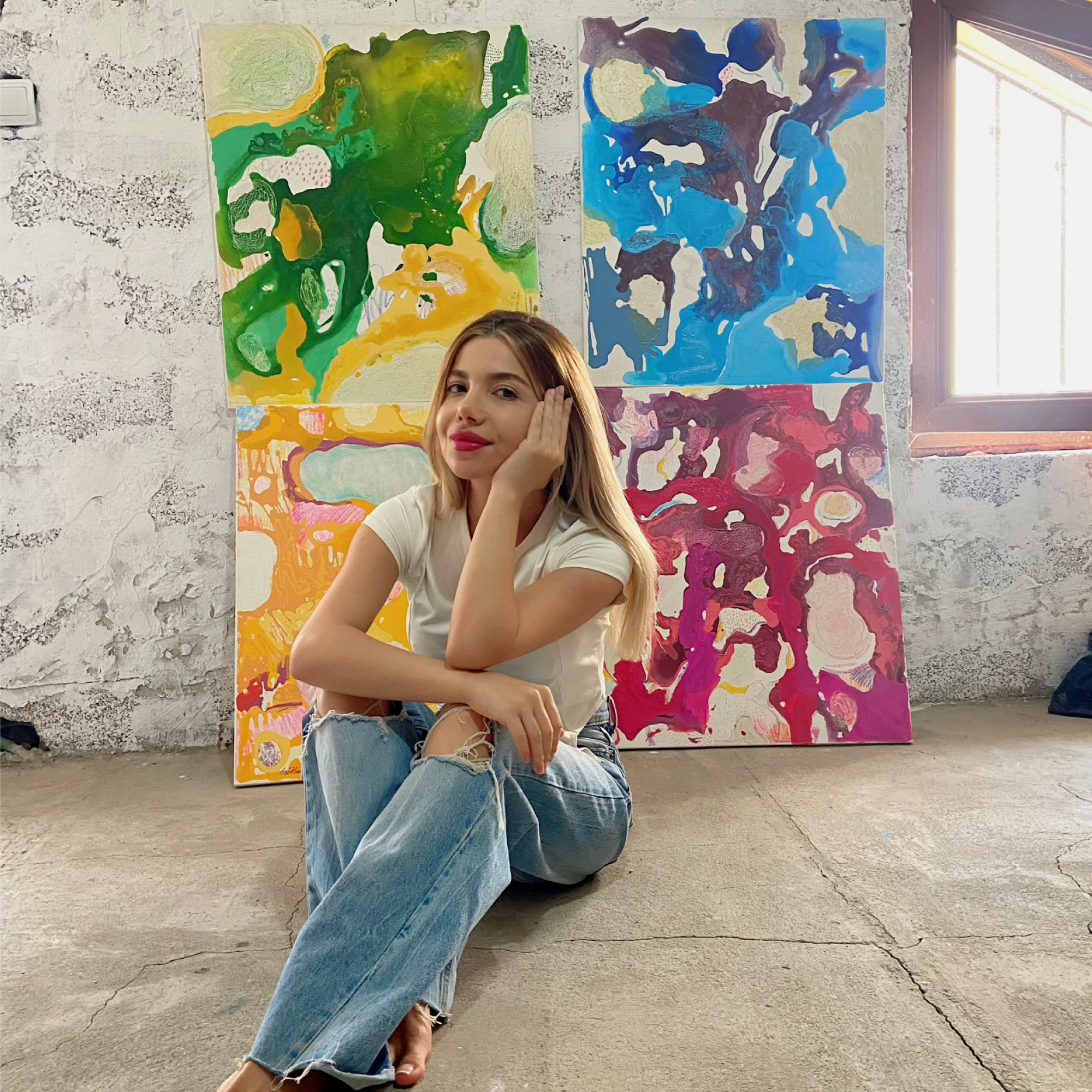Rose Cameron was born 1965 in Manila, Philippines and is residing and working in New York. She is graduate of Rutgers University Mason Gross School of the Arts with degrees in Fine Arts and Art History. Tell us your story, why did you become an artist?
Tell us your story, why did you become an artist?
I left the Philippines aged 12 in the wake of political upheaval. Arriving in the United States, with my parents and speaking no English, I tried with great commitment to adapt and build my life here. I studied diligently and extensively before pursuing a career in advertising and fashion, and by all measures I succeeded, but there was always a gaping hole, a kind of yearning for what I left behind. Memories, smells, people, colors continued to flood my mind and so that is when I turned to art to put all of that on canvas and in the process rediscover and celebrate my identity and culture. My growing and evolving body of work is created to represent this very personal journey, a process where the power of memory reveals, while the pressures to adapt attempts to conceal. And the narrative plays out on the canvas with brushstrokes that honor the weaving of traditional artisan techniques but with an abstract intention.
When you create a new work, how do you go about it? What comes first?
The work always starts with a memory, but the memory is often abstract. The smell of a flower, the ‘sampaguita’ is an ever-present element in my work. The song rising gently from the women bend over picking rice in the fields, the vivid colors on the jeepneys or on my mother’s sun dresses, the sights and sounds of one of the many festivals that were a constant hallmark of family life back then, or the intimate stories told by the women who taught me how to weave a basket. These are just examples.
And then there is the struggle to express and the instinct to suppress the power of that memory. These energies play out in a dance of conflict and passion on my canvas. Over time, the revealing power is consistently rising reflecting my confidence and joy of connection to my past. What can you tell us about your studio, what makes it special to you and how does it influence the way you work?
What can you tell us about your studio, what makes it special to you and how does it influence the way you work?
My studio is a large open area of my home. One large undecorated concrete wall surrounded by large modern windows on the east and west that let the light in and travel across the canvas from early morning to sunset. I think working in my home where I feel extremely comfortable helps me to explore and travel into memory without a kind of structured agenda or process. I also tend to hang 3-4 canvases and work across them intermittently which encourages the abstract side of creativity. Nothing is linear, all is in the moment. Is there a work of art in your life that has especially impressed you?
Is there a work of art in your life that has especially impressed you?
I majored in Fine Arts and Art History in college. My studies led me to be passionate and knowledgeable about ancient art from the Roman and Greek times. I also love the Renaissance period particularly the works of Leonardo, Giotto, Michelangelo and Donatello. The sense of order, structure and beauty of these classical art forms are very appealing to me. I did not like the Impressionistic period.
However, since I return to art and painting, I became fond of the work of Claude Monet, particularly his monumental Water Lilies. When in front of this monumental work, I feel engulfed and swallowed by light and dark, while surrounded by beauty and a certain type of peace. I feel his work challenges me to keep searching and answering questions about myself and the future ahead.
Reach to the stars: where will you be in 5 years?
One of the most exciting and inspiring elements of my journey as an artist is not just how I have been able to express my ideas and memories on canvas but also how those canvases are beginning to resonate here in the United States, and across the world all the way back to Asia and the Pacific Islands where it all began. I am now represented in Indonesia and Singapore as well as the US and over the next few years I would love to build awareness and artistic reputation back in that part of the world because of the authentic nature of my narrative.
Beyond that, I truly hope that my work serves as an inspiration to all people in the world who have experienced a sense of displacement and the pressure that often comes to turning your back on your past and identity to assimilate and discourage discrimination. If my work can bring validity, joy and confidence to those stories and aspiring voices then I believe I will have made a significant contribution to the artistic and human story. Learn more about the artist:
Learn more about the artist:




